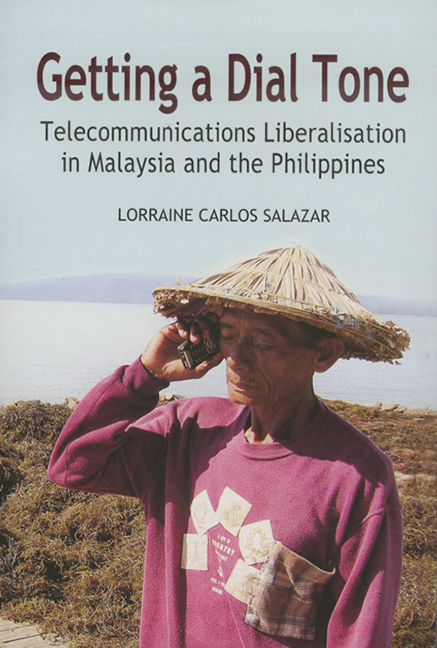Book contents
- Frontmatter
- Dedication
- Contents
- Map of Malaysia and the Philippines
- List of Tables
- List of Figures
- List of Appendices
- List of Abbreviations
- Acknowledgements
- 1 Rent-Seeking, Market Reforms, and States
- 2 Reviewing the Literature: Theories and Puzzles
- 3 Historical Overview of the State and Business in Malaysia and the Philippines
- 4 The Telecommunications Sector in Malaysia and the Philippines Before Reform
- 5 Reforming the Malaysian Telecommunications Sector
- 6 The Liberalisation of Telecommunications in Malaysia
- 7 Regulatory Reforms in Malaysia
- 8 Reforming the Telecommunications Sector of the Philippines
- 9 The New Players and the Service Area Scheme
- 10 Regulatory Reforms in the Philippines
- 11 Conclusions
- Appendices
- Bibliography
- Index
- About the Author
6 - The Liberalisation of Telecommunications in Malaysia
Published online by Cambridge University Press: 21 October 2015
- Frontmatter
- Dedication
- Contents
- Map of Malaysia and the Philippines
- List of Tables
- List of Figures
- List of Appendices
- List of Abbreviations
- Acknowledgements
- 1 Rent-Seeking, Market Reforms, and States
- 2 Reviewing the Literature: Theories and Puzzles
- 3 Historical Overview of the State and Business in Malaysia and the Philippines
- 4 The Telecommunications Sector in Malaysia and the Philippines Before Reform
- 5 Reforming the Malaysian Telecommunications Sector
- 6 The Liberalisation of Telecommunications in Malaysia
- 7 Regulatory Reforms in Malaysia
- 8 Reforming the Telecommunications Sector of the Philippines
- 9 The New Players and the Service Area Scheme
- 10 Regulatory Reforms in the Philippines
- 11 Conclusions
- Appendices
- Bibliography
- Index
- About the Author
Summary
In this chapter we now turn our attention to the telecommunication industry's liberalisation and the ensuing outcomes. The narrative identifies the market entry beneficiaries, discusses how they obtained their licenses, and identifies their political linkages. The section also assesses the types of rent outcomes and their impact on the industry and economy.
Although the privatisation policy was well planned and deliberations with various stakeholders were held during a series of conferences and seminars, the liberalisation of the sector was largely unplanned. Decisions to allow the entry of competition were made in an ad-hoc and secretive manner. The way in which licenses were issued suggests that the government favoured politically well-connected businessmen. Senior UMNO leaders presided over the distribution of the much sought after market entry licenses.
The opening of the industry commenced in the early 1980s, with the liberalisation of customer equipment terminals and the award of turnkey contracts. As was discussed in Chapter 4, these contracts were exclusively conferred to bumiputera-owned firms. Other methods used for liberalisation were public pay phones and radio paging licensing. However, the most profitable sectors of the industry were basic network, mobile telephony, and international gateway services. The liberalisation of these segments marked the introduction of real competition in telecommunication services.
An examination of the introduction of competition in these three segments indicates the political nature of awarding licenses. The Minister of Energy, Telecommunications, and Posts had the authority to award licenses. Yet, Samy Vellu, who held the portfolio from 1989 to 1995, and under whom the proliferation of licensees took place, declared in 1993 that it was the Cabinet that decided on these matters. This statement confirmed the widely held belief that the power to allocate licenses or contracts lay not with the Minister, but with someone higher than him.
From 1993 to 1995, the liberalisation of mobile telephony, international gateway, and basic network facilities took place rapidly. By 1995 there were seven basic network providers, seven cellular mobile phone systems, and five international gateway facilities. The lack of planning and the absence of a policy for liberalisation were made obvious when a National Telecommunications Plan (NTP) was released in 1994, after all but one of the licenses had been awarded.
- Type
- Chapter
- Information
- Getting a Dial ToneTelecommunications Liberalisation in Malaysia and the Philippines, pp. 160 - 197Publisher: ISEAS–Yusof Ishak InstitutePrint publication year: 2007

